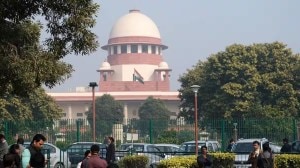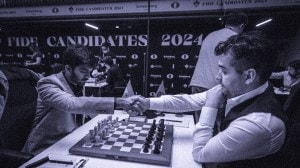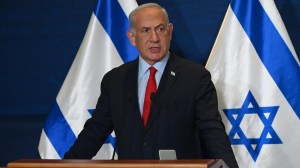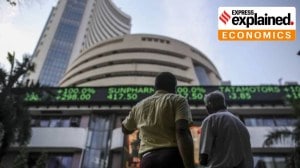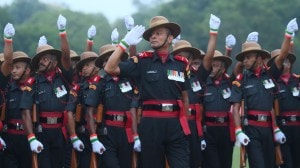- India
- International
The darkest hour: ADM Jabalpur was a test for SC. Only the dissenter passed it
As legal scholar Gautam Bhatia put it in Transformative Constitution, Justice Khanna’s dissent would constitute a “contrapuntal” or something that appears as a counterpoint, often solitary, against the tide at the time, but something that conceals the kernel of the future and the way ahead, which lives on to speak forcefully, another day.
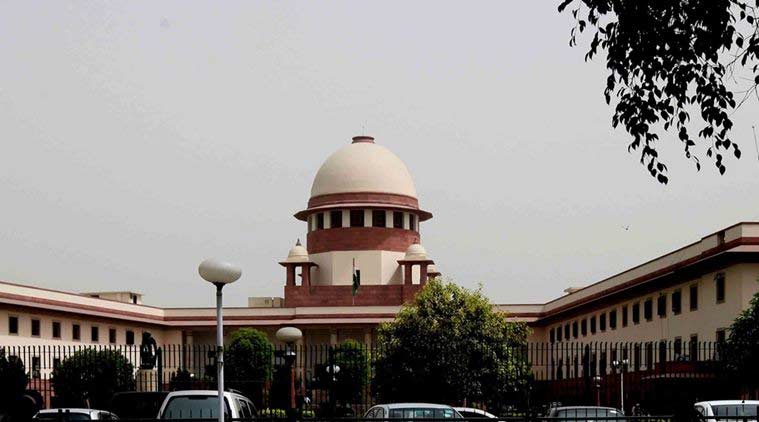 ADM Jabalpur is seen as one of the darkest spots in the history of the Supreme Court. (File)
ADM Jabalpur is seen as one of the darkest spots in the history of the Supreme Court. (File)
Costa Gavras’ 1982 film Missing is a haunting story of what a military dictatorship does to its citizens as they go, well, missing. The real-life story set in Chile was also about the actions of the US government, which even had a lawsuit filed against it. The way a society responds to enforced disappearances or “detentions” by the state is often seen as a marker of the health of a democracy.
That could well be why the Habeas Corpus or Produce the Person writ is a sacred one, that ties democracy to each of its citizens against the power of the state.
On Independence Day, Justice D Y Chandrachud, in a formidable lecture on Freedom as Art in Mumbai, made a revealing personal statement which holds great relevance today. The Supreme Court judge spoke of how “with seven to eight hours of dictation left in the day, when I finished dictating” the order annulling the infamous ADM Jabalpur judgement of 1976, he “told his Secretary that they would close for the day”. He had “told a parent he was wrong.” “I know he (former Chief Justice YV Chandrachud) believed through his life that ADM Jabalpur was wrong.”
The senior Chandrachud was among the four SC judges who sat on the five-judge Habeas Corpus bench for 37 working days from December 1975 to February 1976, and ruled that personal liberties in India were not to be necessarily upheld in the face of the executive after declaring Emergency.
Also Read | As the Supreme Court turns 70, is the sentinel sufficiently alert, or is it in danger of losing the plot?

The detentions started when on June 26, five MPs, part of a parliamentary delegation to Bengaluru were picked up from the city under the controversial Maintenance of Internal Security Act. It was on September 1, 1975 that the SC decided to collect all the Habeas Corpus cases from High Courts and bunched them together to hear as one.
Many seniors at the Bar organised several telegrams to be sent to the chief justice to insist that he constitute a bench strictly in keeping with seniority. With the Emergency having been declared, there was speculation and concern about who would be on the bench and the pressure from the executive might prove to be too much for the chief justice.
But it is said that a former attorney general called upon the CJI and told him about the rumours in the Supreme Court Bar Association, which ensured that a bench was chosen in accordance with seniority.
The hearings started on December 15, 1975.The government’s arguments were centred around how the political executive had rights in times of war or during an Emergency to restrict personal liberty. When Justice H R Khanna, the only one who was ultimately to dissent, asked the attorney general, Niren De, if “supposing some policeman, for reasons of enmity not of state, kills someone, would there be a remedy?” De is said to have replied: “My Lord, not so long as the Emergency lasts.”
Several senior advocates including Shanti Bhushan, Soli Sorabjee, V N Tarkunde, argued the habeas cases and maintained that it was “appalling” that with the remedy of habeas denied, the securing of a citizen’s life and liberty was “dead”. Sorabjee went onto argue that right of liberty predated the Constitution. The ruling, however, was 4-1.
All the judges, interestingly, wrote separate judgments. But the net result was upholding the executive’s prerogative to detain people and so, a citizen had no right to move a habeas in a high court under Article 226 in the light of the Emergency. Justice Beg, amazingly, went on to speak of the “care and concern bestowed by the state authorities upon the welfare of detenus who are well-housed, well-fed and well-treated is almost maternal.”
ADM Jabalpur is seen as one of the darkest spots in the history of the Supreme Court. The motives of those gave that judgment have been a matter of great speculation ever since. Was it an honest but narrow reading of the law, or was it self-preservation against a strong government or was it something else? Notably, Justice YV Chandrachud maintained that he had read the law right, even if it was not right to follow it. This does not hold much water now.
Another unique reasoning accorded was of rescuing the Court by going along with the government. On January 30, 1976, a resolution was moved in the Lok Sabha, recommending changes which would have resulted in significantly changing the Constitution to clip the wings of the judiciary, including the power of judicial review, writ jurisdiction of Courts and Parliament’s power to amend the Constitution.
Legal scholars like Upendra Baxi felt had the Court acted differently in ADM Jabalpur, “it would have imperilled the Courts’ existence”. That argument about saving the Court reminds of the apocryphal tale about the American military officer in Vietnam arguing that they had to destroy a village to save it.
Constitutional scholar Granville Austen maintained that the ADM Jabalpur case captured the extent of the Emergency, its testing of consciences, degrees of courage among lawyers and judges and its evocations of judicial philosophy. In his words, “the Habeas Corpus case captures the Emergency as nothing else”.
Once the Janata Party government was in place after Indira Gandhi lost the elections, in a speech to FICCI on April 22, 1978, Justice Y V Chandrachud had said: “I regret that I did not have the courage to lay down my office and tell the people, well, this is the law.”
But one man had that courage at the time — Justice H R Khanna. He was superseded, his dissent, now legendary, formed the grounds of the rejection of ADM Jabalpur in 2017. His portrait adorns court number two today, but then, he resigned after being superseded, while each of the other judges on the bench went on to serve as Chief Justice of India.
The then government did not stop at Justice Khanna. From nine high courts,16 judges who had anything to do with upholding personal liberties were swiftly transferred within two months. As legal scholar Gautam Bhatia put it in Transformative Constitution, Justice Khanna’s dissent would constitute a “contrapuntal” or something that appears as a counterpoint, often solitary, against the tide at the time, but something that conceals the kernel of the future and the way ahead, which lives on to speak forcefully, another day.
This article first appeared in the print edition on August 29, 2019 under the title ‘The darkest hour’. seema.chishti@expressindia.com
40 Years Ago
EXPRESS OPINION
More Explained
Apr 16: Latest News
- 01
- 02
- 03
- 04
- 05



















